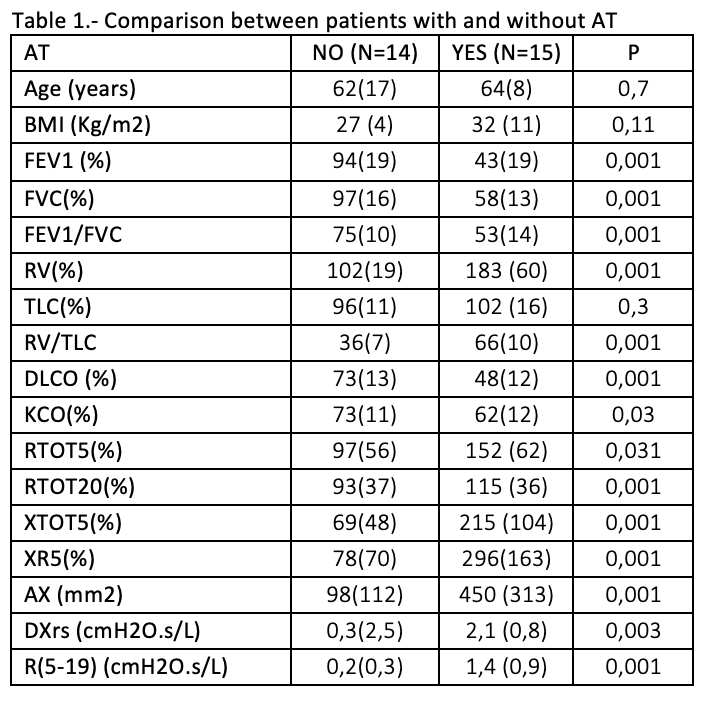Abstract
Impulse oscillometry (IOS) informs about lung mechanics by measuring airflow resistance (R) and reactance (X). Recently, new noninvasive ventilation devices have been developed, these devices are capable to detect air trapping (AT) by IOS and correct it by adjusting the settings. However, the relation between lung volumes and IOS is still unclear.
Aim.
The aim is to establish relationships between lung volumes and AT and the R and X measured by IOS.
Method.
A cross-sectional observational design. We analyzed anthropometric variables, FEV1, FVC, FEV1/FVC, DLCO and KCO, total lung capacity (TLC), residual volume (RV), functional residual capacity (FRC), and VR/TLC. AT was diagnosed if RV/TLC >50 and RV>120%. In IOS, we analyzed: 5 and 20 Hz R (R5 and R20), difference between total 5 and 20 Hz R (R5-20), expiratory 5 Hz X (XR5), difference between inspiratory and expiratory X (DXrs) and X area (AX). Pearson correlation test, t student and logistic regression (AT: dependent variable, R and X: independent ones) were performed. P<0,05 was considered significant.
Results.
29 patients, 18 males (62%), 62 (13) years old. 51% meet criteria for AT. Table I compares patients with and without AT. In the multivariate study, the best AT predictor was XR5 (p<0.001).
Conclusions.
1. DLCO, RV, RV/TLC and FRC are related to X and R, but TLC and KCO are not.
2. AT is related to an increasing in the % of R and X.
3. XR5 was the best predictor of AT presence.
